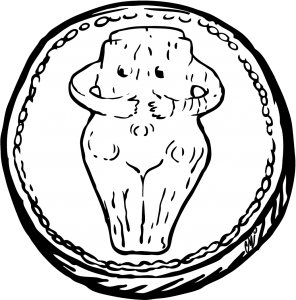Cycling through other times

The people’s need to cover distances using their own force, but much faster than walking, led towards the end of the 18th century and the beginning of the 19th century to the emergence of a new means of transport, which in time would become today’s bicycle.
If, at first, this vehicle intended for individual transport was made of wood, had no steering and braking system, and no pedals, the user pushing alternatively his feet in the ground in order to propel the device, over time, after a rudimentary stage, pedals were attached to the front wheel of the vehicle and it becomes known as velocipede.
New technology increases the strength and “bicycles” begin to be made of metal. And to increase the speed of travel the front wheel becomes much larger than the rear wheel. Thus, due to the very large diameter, one rotation of the pedals allowed to move more in a short time and with less effort, but these models were quite uncomfortable and “produced sensation and even consternation due to their height”.
The bicycle becomes comfortable when it changes again the design, the two wheels getting the same size and the pedals no longer being attached to the front wheel, but becoming components of a chain transmission system. Also, for a more convenient use, rubber begins to be used to cover wheels equipped with spokes.
Although the vehicle offered greater mobility to people who used it both for relaxation and in a practical and useful way, with the increase in popularity of cars, the general interest in cycling decreased, and bicycles remained mainly in the use of young people and children or in sports competitions.
The attraction for this clean means of transport and recreation, however, is gaining a revival in the mid-20th century, with the increase of traffic congestion in the streets of the cities.
Today millions of bicycles are manufactured and marketed worldwide with numerous options related to advanced technologies, materials, speeds, brakes, seat shape or handlebar curvature, etc. Perhaps many of our contemporaries, believing that the bicycle has existed in its current form since it was invented, cannot imagine that there was a time when the ordinary bicycles caused stupefaction because of the appearance, even being considered curiosities of the technology.
The exhibition aims to bring to the public attention perhaps less known information about the appearance of bicycles from the beginning of their existence, as well as their evolution over time.
The mission of this exhibition project is to highlight the important collection of photographs owned by the Bucharest Municipality Museum and to present some new images, thus calling to educate young people in the idea of understanding the importance and necessity of protecting and preserving historical and cultural heritage.
Last but not least, the objectives of the exhibition project include arousing community’s interest in clean means of transport, beneficial for the physical condition and health of the body, but also for the decongestion of today’s road traffic.
Curator: Ana Iacob, museographer, Heritage and Centralized Register Office

